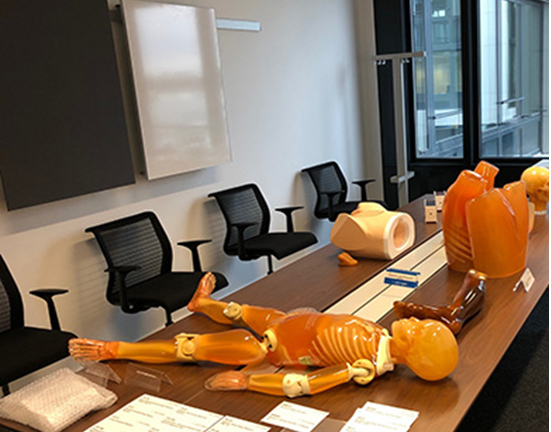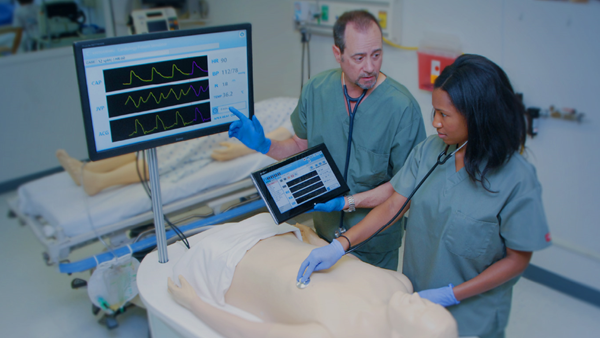ADVANTAGES OF SIMULATION LEARNING
- A range of easily accessible learning opportunities:
In the current apprenticeship model, it is hoped that medical students encounter enough situations to ensure that they become competent. This method puts students and patients at a disadvantage.
Simulation offers scheduled, valuable learning experiences that are difficult to obtain in real life. Students address hands-on and thinking skills, including knowledge-in-action, procedures, decision-making, and effective communication. Critical teamwork behaviors such as managing high workload, trapping errors, and coordinating under stress can be taught and practiced. Because any clinical situation can be portrayed at will, these learning opportunities can be scheduled at convenient times and locations and repeated as often as necessary.
- The freedom to make mistakes and to learn from them
Working in a simulated environment allows students to make mistakes without the need for intervention by experts to stop patient harm. By seeing the outcome of their mistakes, students gain powerful insight into the consequences of their actions and the need to get it right.
- Error Management and Error Prevention
Medical practice is characterized by a constant pursuit of perfection. During medical school students strive for error-free practice in an environment where mistakes are not well accepted. As a result, doctors have difficulties in dealing with errors and admitting them as well. Besides its advantages as a teaching and learning tool for conventional medical skills, simulation is also a useful approach to provide competence in new areas.
- The learning experience can be customized:
Simulation can accommodate a range of learners from undergraduates to postgraduates. Students can gain confidence and muscle memory for tasks that then allow them to focus on the more demanding parts of care. Some complex procedures and rare diseases simply do not present enough opportunities for practice, even to established clinicians. Examples include treating a heart attack in an outpatient clinic setting, or handling a case of malignant hyperthermia in the operating room. This is a gap that simulation training methods can help fill.
- Detailed feedback and evaluation:
Real events and the pace of actual healthcare operations do not allow for the best review and learning about why things took place, or how to improve performance. Controlled simulations can be immediately followed by videotape-supported debriefings or after-action reviews that richly detail what happened. Advanced surgical and task simulators gather much data about what the learner is actually doing. These performance maps and logs provide a solid and necessary feedback mechanism to students and help instructors target necessary improvements.
Simulators also ensure :
- An increase in retention and accuracy due to continuous repeated practice.
- A reduction in undesirable interference with training.
- Similar learning opportunities as the same scenario can be accessed by multiple students.
- The use of real medical equipment early in medical training.
CONCLUSION
Simulation is a reliable educational assessment method that has unique features which provides a safe and controlled environment to teach a wide variety of both technical abilities and non-technical skills. Therefore, providing appropriate simulation for medical training is a major path compliant with the best academic standards and ethical principles in the process of medical education.
Medicine as a profession is one that requires adequate medical training which includes theoretical learning and the acquisition of clinical skills. Medical students in the process of honing their clinical skills require regular practice with patients or a realistic imitation of patients- a simulator. The inclusion of simulators and phantoms in the training of medical students in the College of Medicine, University of Lagos will reduce risks to patients and students, improve students competence and confidence and raise the high academic standard in the college even higher.


